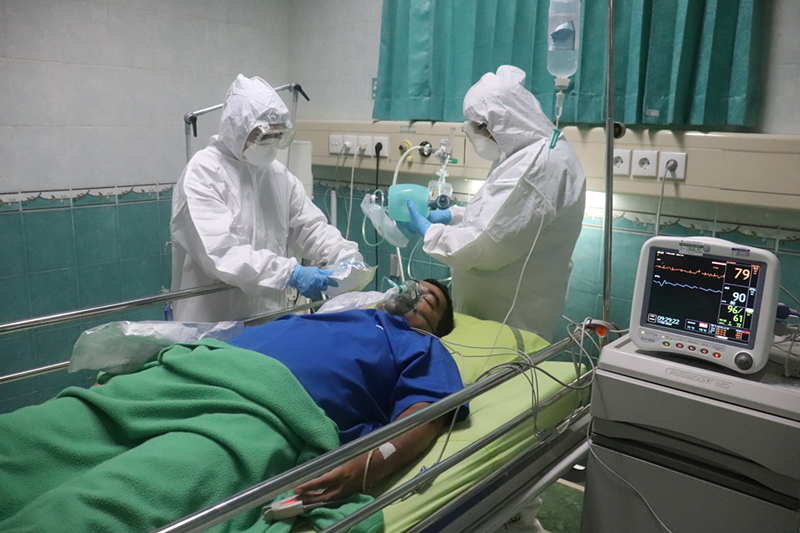
Dammit, Hamilton County, we were doing so well for a while there.
The Centers for Disease Control and Prevention (CDC) says that Hamilton County now is at "high risk" for COVID-19, the federal agency's most urgent label. On Aug. 2, the CDC had labeled the county one level lower at "substantial risk."
The CDC uses local, state and national data to designate coronavirus hot spots, labeling regions as "high risk," "substantial risk," "moderate risk" and "low risk."
As COVID-19 vaccines became more widely available earlier this year, Hamilton County typically had been in the "moderate risk" category on the CDC's COVID-19 tracker. But as vaccinations plateaued and Ohio and Kentucky rescinded their coronavirus safety protocols in early June, the region's COVID-19 cases have increased.
As of Aug. 9, Hamilton County's seven-day total for cases is 941, more than a 73% increase over the previous seven-day period.
Hamilton County's seven-day positivity rate stands at 7.15%, a 1.42% change from the previous period (the positivity rate is the number of people who test positive out of all coronavirus tests performed).
Hospitalizations within Hamilton County also are rising again, with 50 new admissions over the past seven days, a 2.04% increase. Intensive Care Unit bed use also is increasing; 6.59% of ICU beds in Hamilton County are presently occupied, a 2.31% increase over the previous period.
Hamilton County is not the only county in Greater Cincinnati that's showing a growing risk for COVID-19. Clermont and Warren counties in Ohio and Boone, Kenton and Campbell counties in Kentucky are all listed as "high risk" on the CDC's county-level tracker, while Butler County in Ohio is "substantial." All Greater Cincinnati counties mentioned have seen increases in coronavirus cases, according to CDC data.
Last week, Butler, Clermont and Warren counties in Ohio were listed as "substantial," while in Kentucky, Boone County was "high risk" and Kenton and Campbell counties were "substantial."
The CDC calls most counties within the Commonwealth "high risk," attributed to Kentucky's soaring positivity rate.
On Aug. 9, the Cincinnati Enquirer reported that COVID-19 cases throughout Ohio have increased 51.9% over the last seven days.
The Delta variant of the coronavirus largely has been responsible for the sharp uptick in cases, hospitalizations and deaths, and scientists warn that this strain is much more dangerous than Alpha, the original virus. People infected with Delta carry 1,000 times more of the virus, which makes it easier to transmit among others when speaking, singing, sneezing or breathing hard, particularly within indoor areas. Health experts say that Delta is more than twice as easy to spread as Alpha.
Unvaccinated individuals are at the highest risk for severe infection and substantial health issues from coronavirus, experts say, though some vaccinated individuals have also become infected due to Delta's highly contagious nature. Symptoms and rates are less severe in individuals who are fully vaccinated with a Pfizer, Moderna or Johnson & Johnson (J&J) COVID-19 vaccine, though. According to the CDC, a “fully vaccinated” person is one who is two weeks past their second dose of a two-dose vaccine (Pfizer and Moderna) or two weeks after a single-dose vaccine (J&J)
As of Aug. 6, 52% of Hamilton County's total population has received at least one dose of an authorized COVID-19 vaccine, while 49.9% are fully vaccinated. The vaccine is available to those ages 12 and older.
Last week, representatives from the six largest hospital systems in Greater Cincinnati jointly announced that they would require all employees, contractors and volunteers to be vaccinated by fall. Cincinnati's hospital systems also will return to COVID safety protocols from earlier in the pandemic: mask requirements for both unvaccinated and vaccinated individuals within healthcare facilities and support areas plus social distancing.
Health officials have long said that a combination of vaccinations and masking will help slow the highly infectious Delta variant of the coronavirus. In July, the CDC recommended that both unvaccinated and vaccinated individuals wear face masks, especially indoors and in regions of great virus transmission or low vaccination.
The federal agency also urged all K-12 schools to require masking for students, employees and visitors, regardless of whether they've received an authorized COVID-19 vaccine or not (Cincinnati Public Schools announced last week that it would require masking indoors).
Sign up for our weekly newsletters to get the latest on the news, things to do and places to eat delivered right to your inbox.
Follow us on Facebook, Twitter and Instagram.





